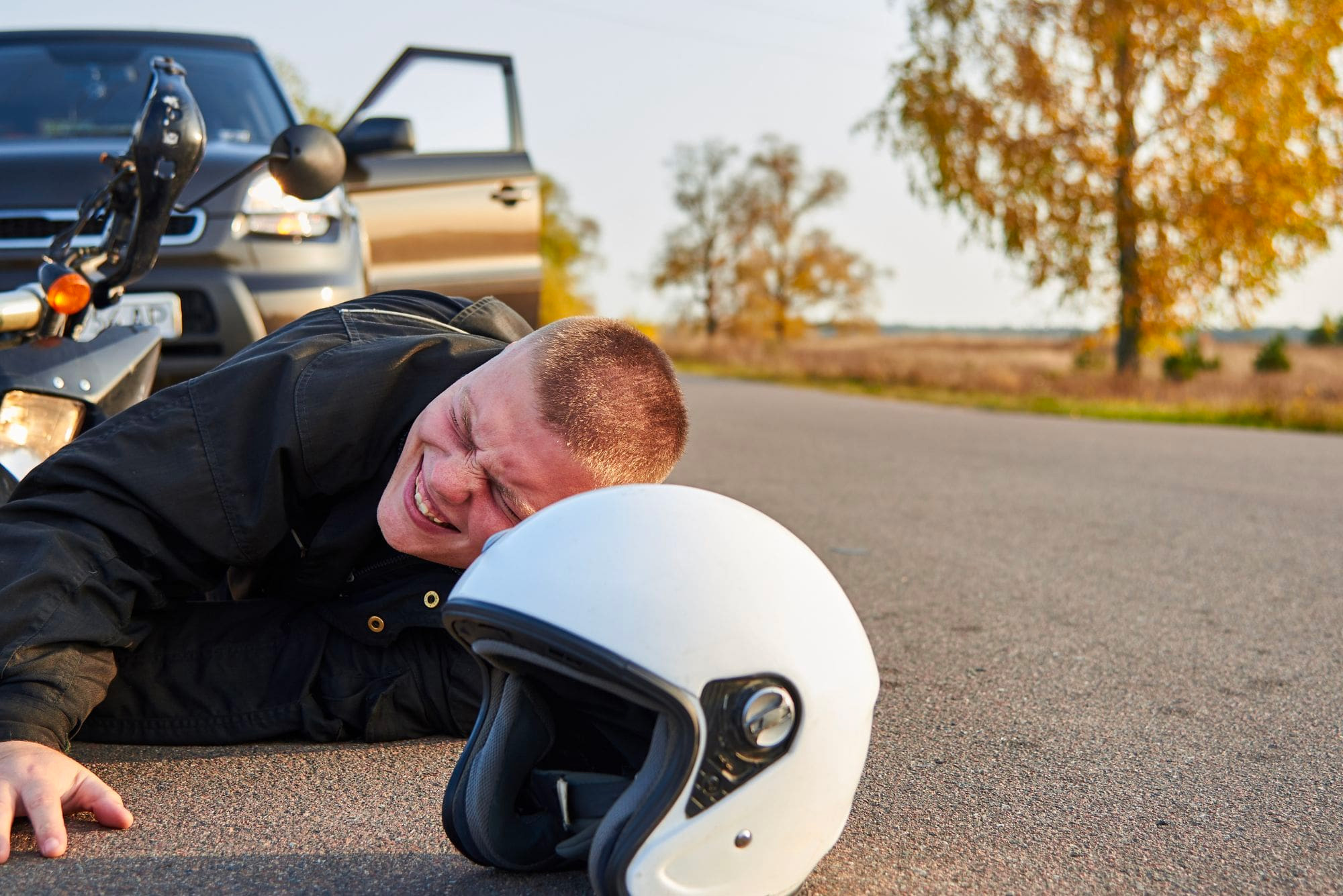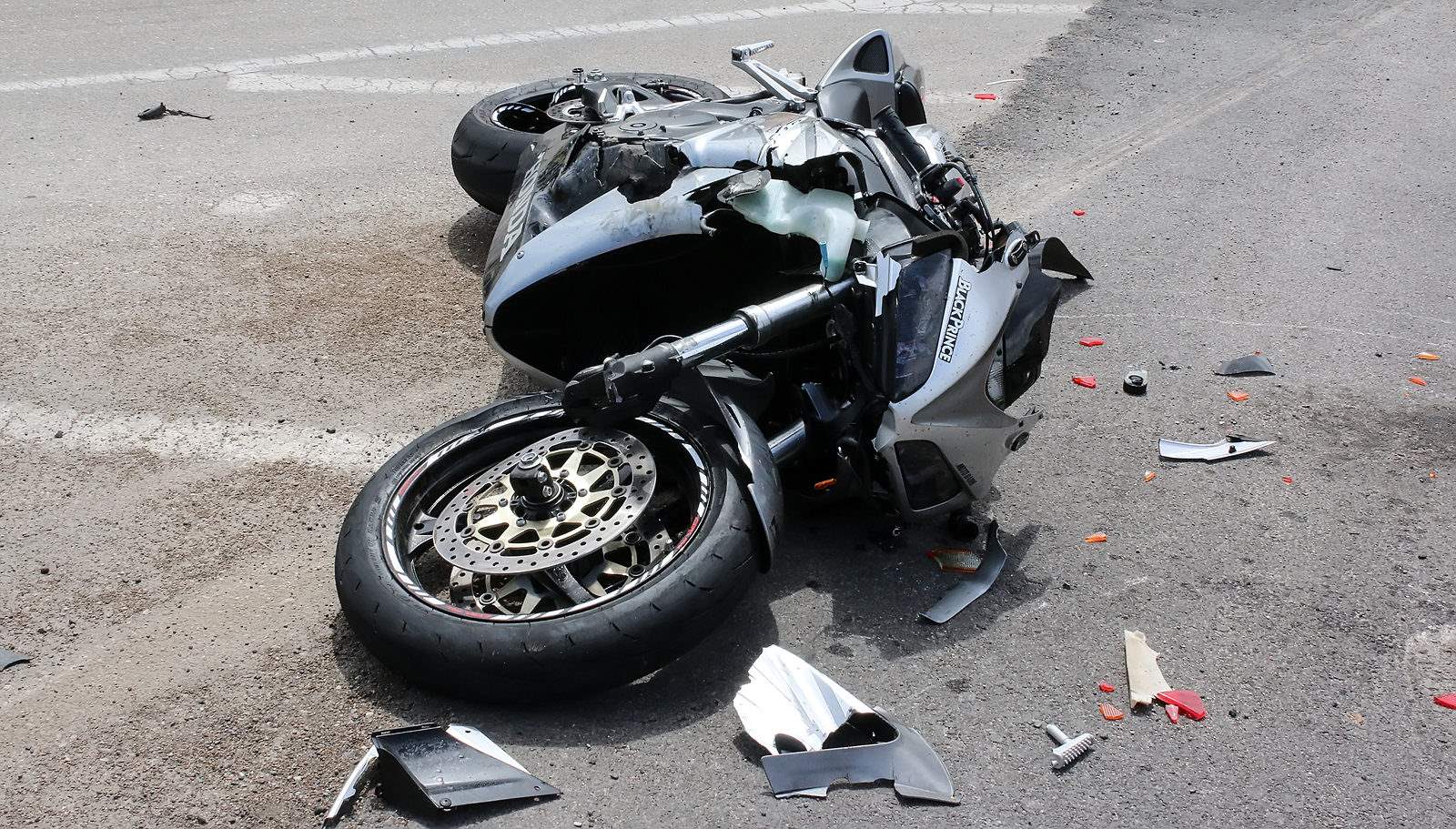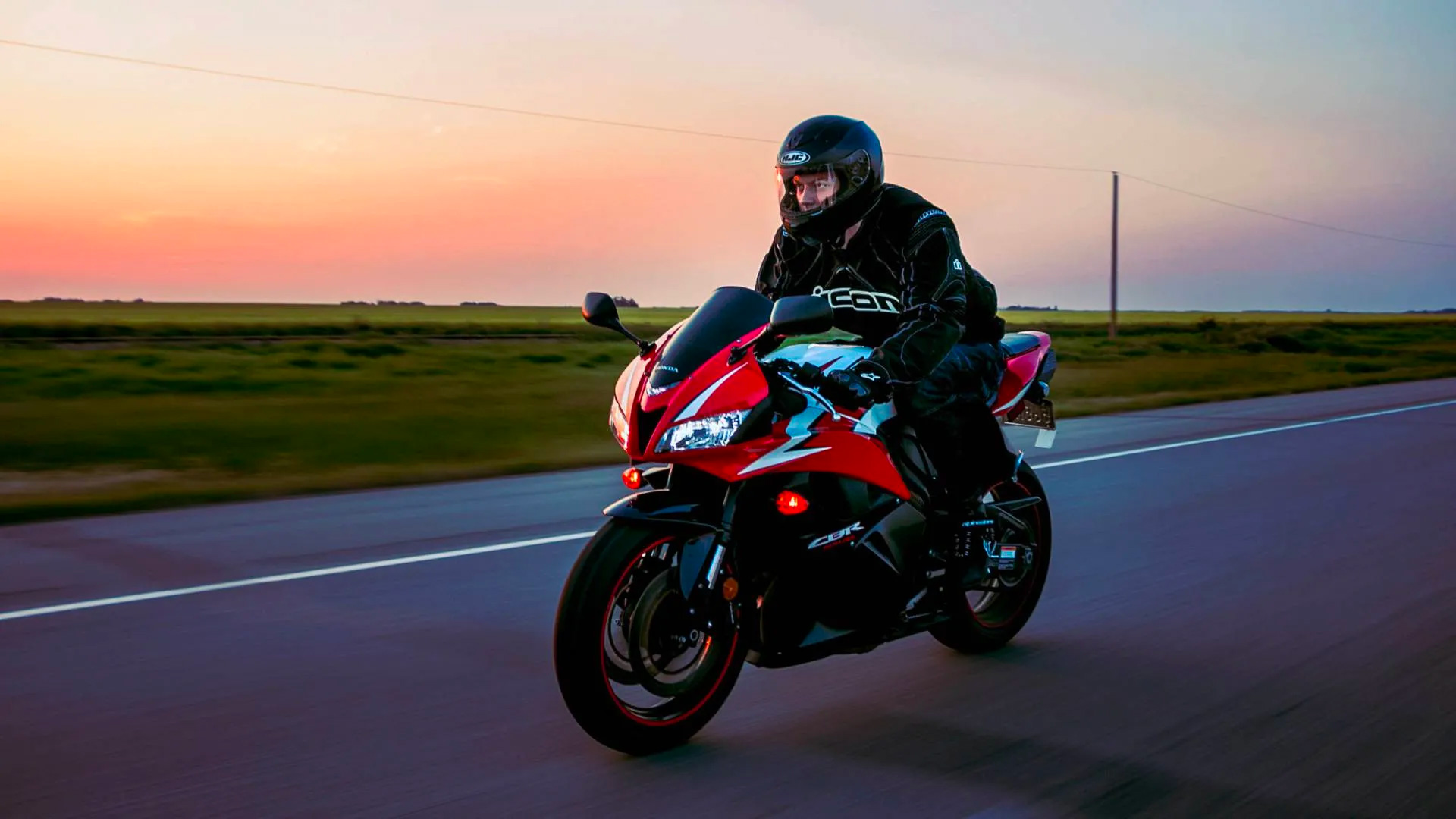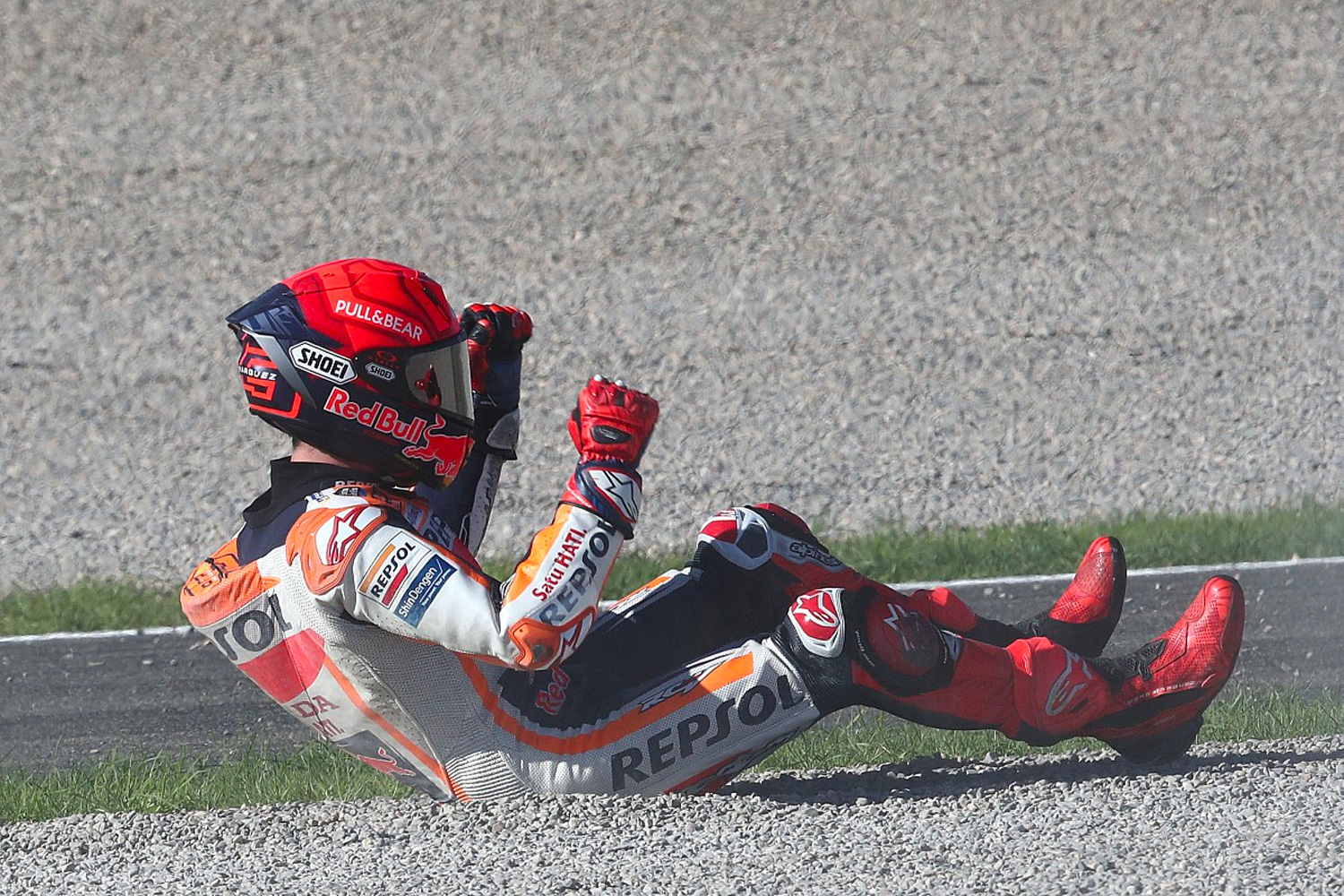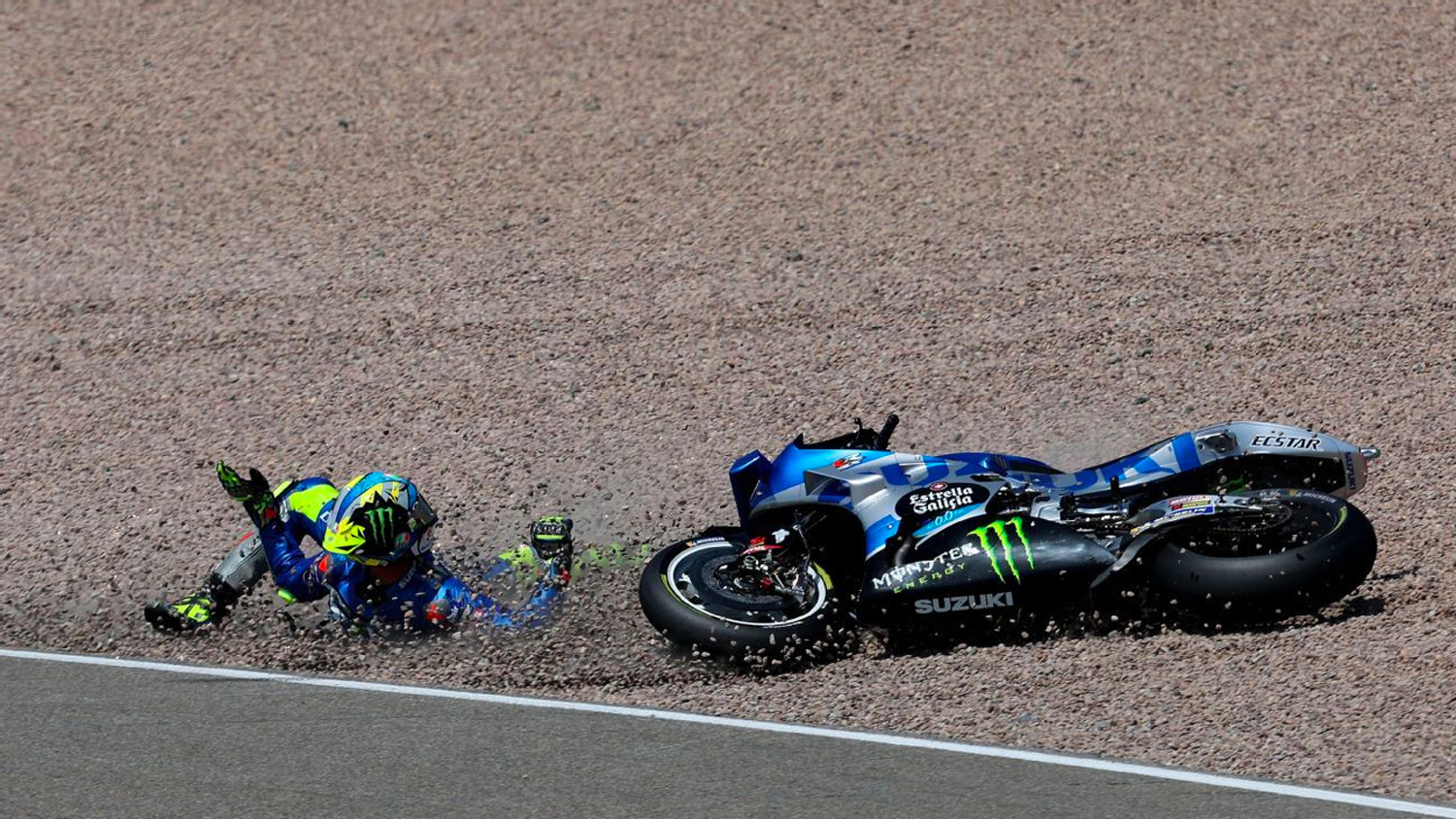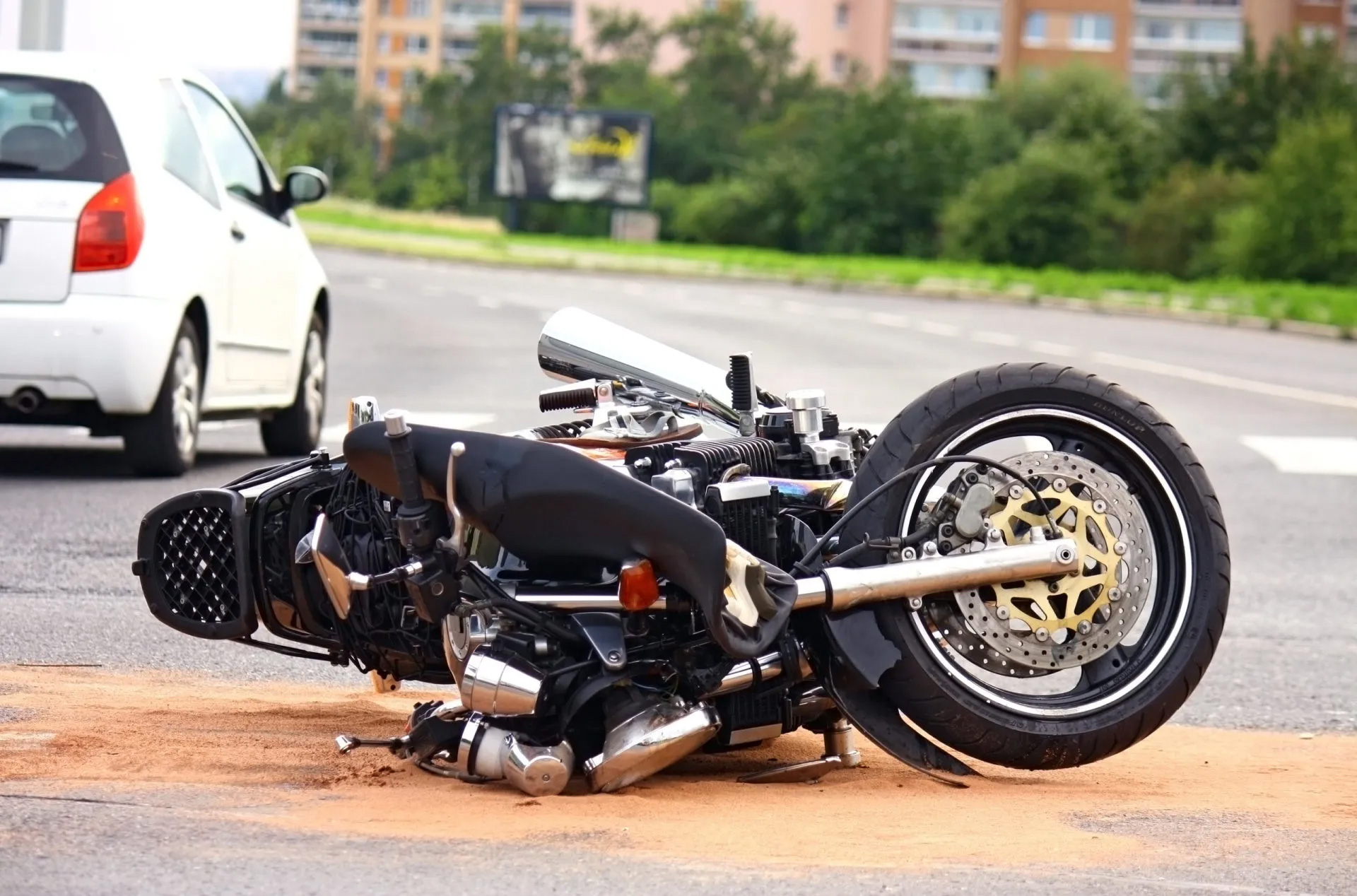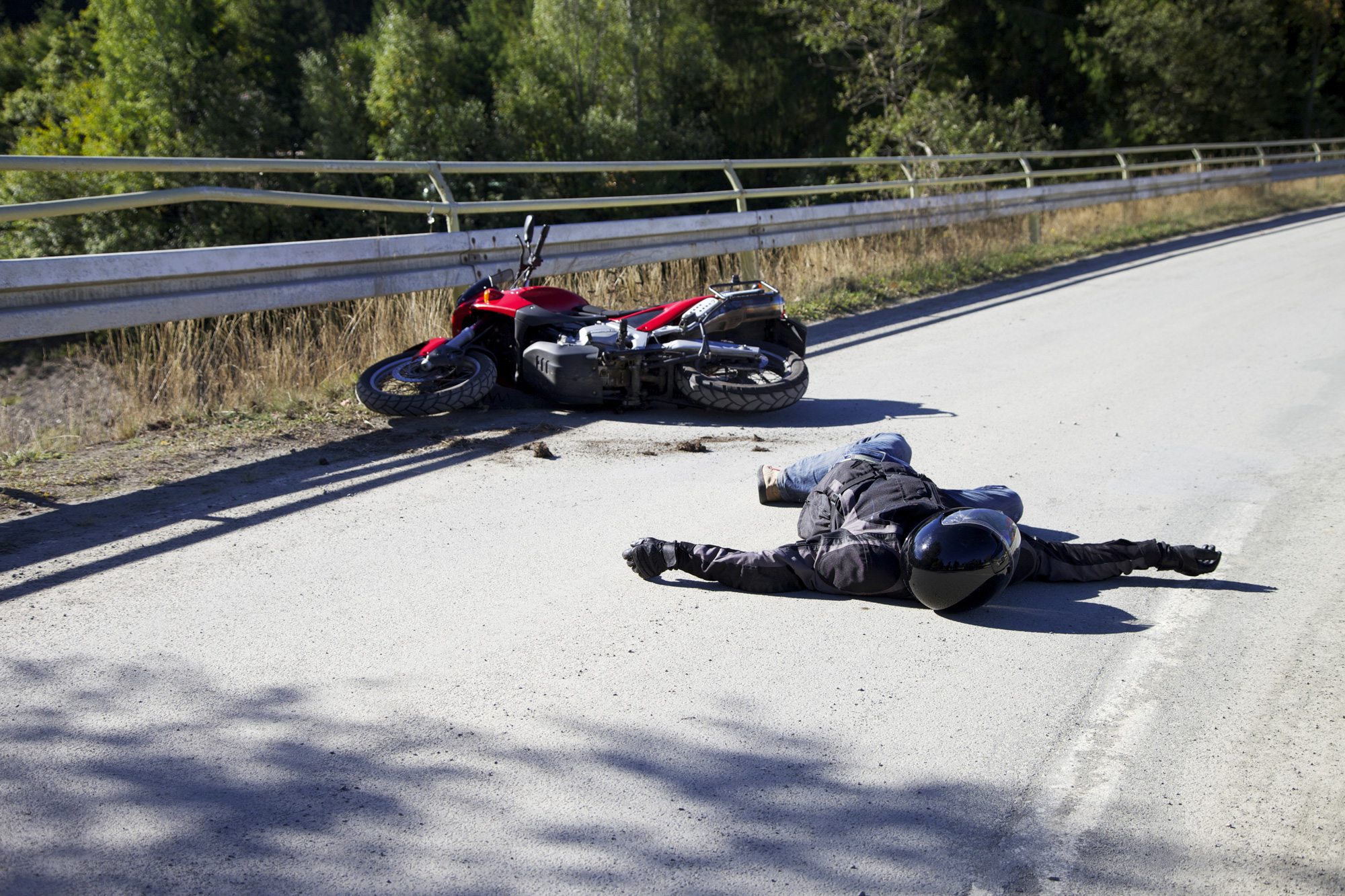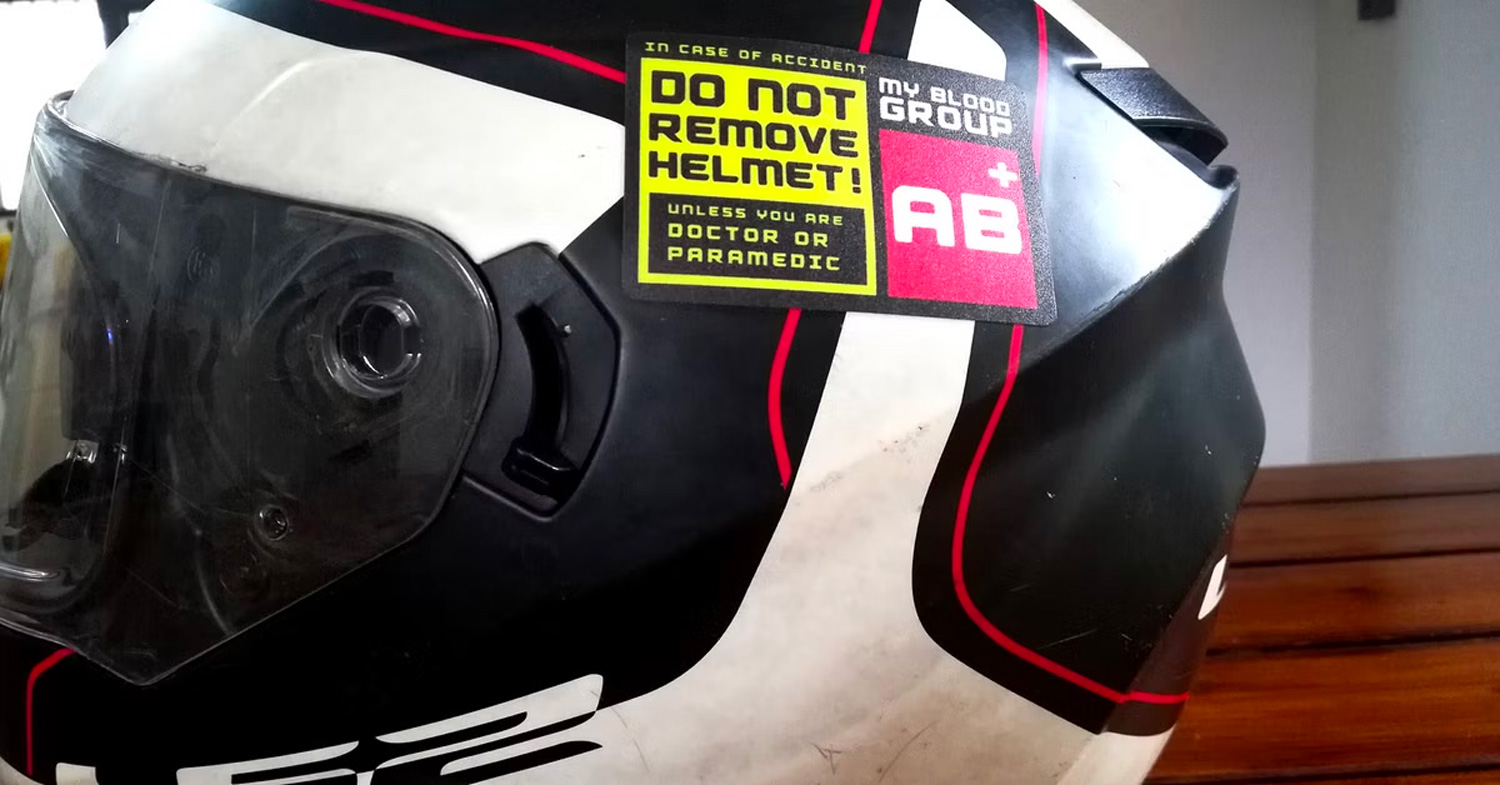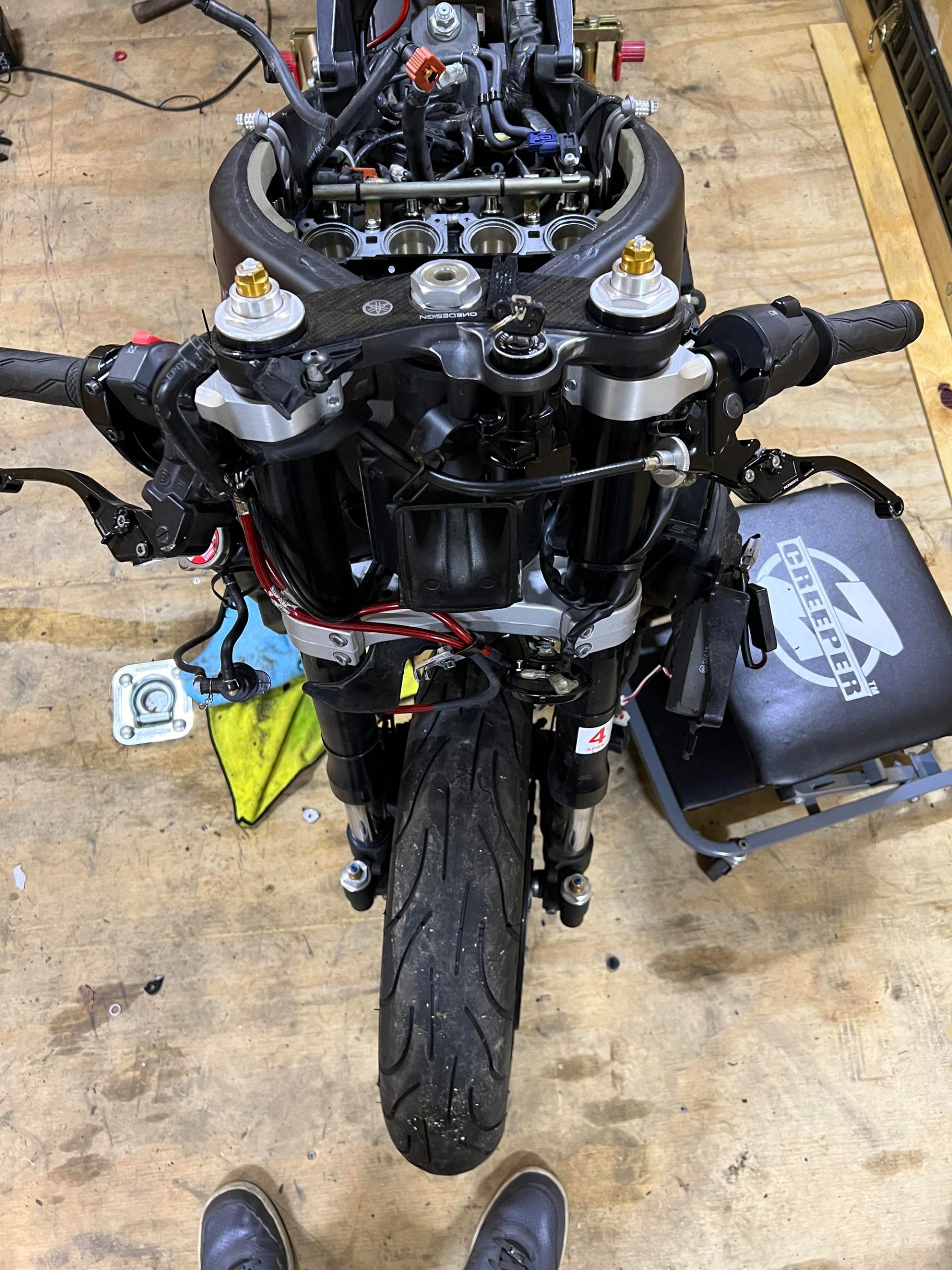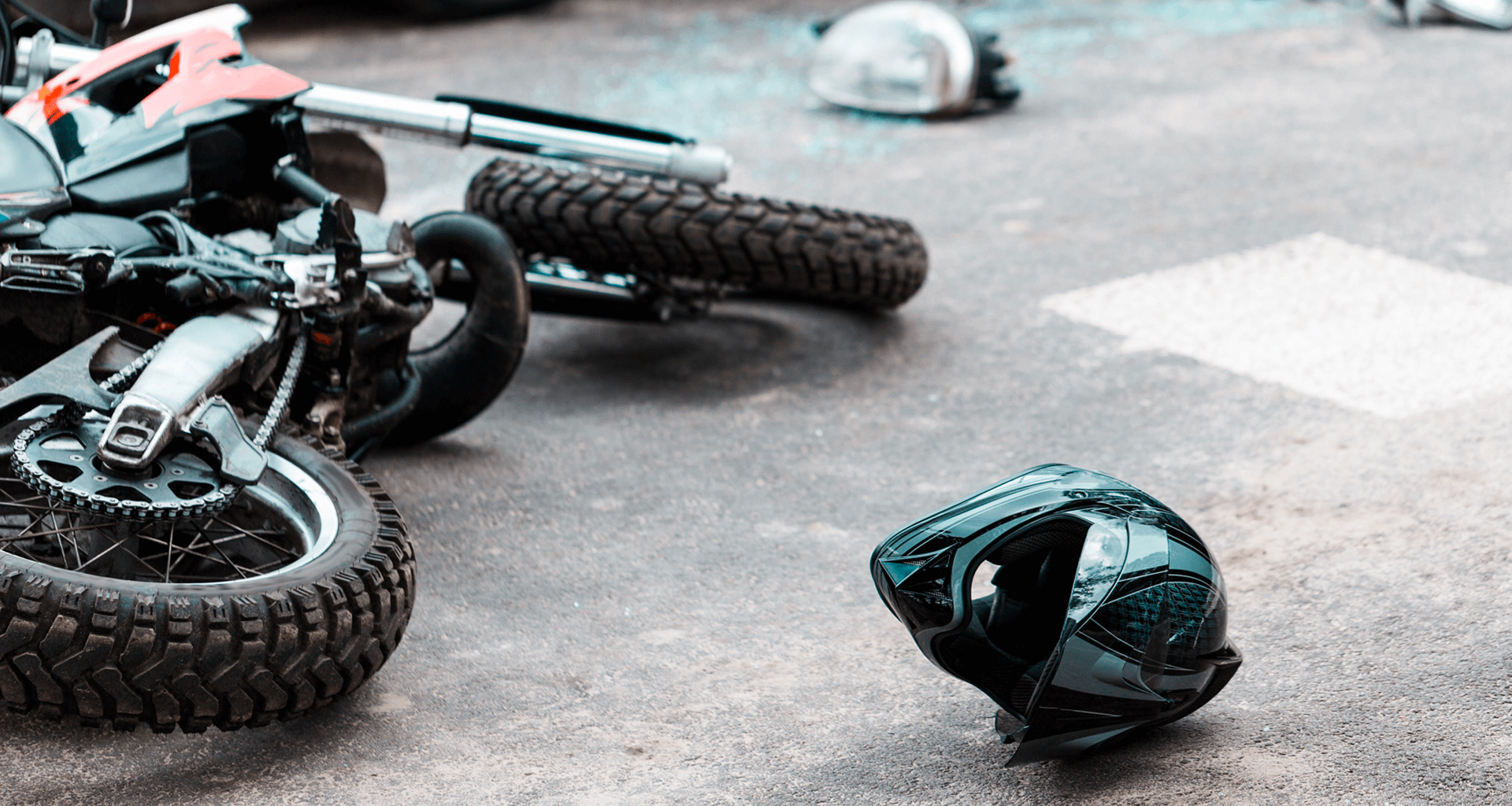So you want to fall off your motorcycle? No. Of course you don’t. No one does. Motorcyclists spend their entire lives trying not to fall off their bikes. So who wants to learn how to do it? You do, that’s who. Forewarned is forearmed, as they say. And while most “offs” are as dangerous as they are short, there’s a real chance that if you know what’s going to happen, you just might be able to minimise the damage to yourself and your bike.
For the sake of simplicity, I’m going to divide this piece up into three main parts. The before, during and after phases of falling off. Yeah, it’s tempting to think of falling off a bike as the part where you and your bike have a brief and not at all romantic encounter with the asphalt. But the fact is that if you’re trying to (quite literally) save your skin, there’s stuff you can do before and after the off itself that will really help you make the most of your upcoming trip to Kiss-the-dirt-ville.
Bikes can be replaced. People, not so much. Image via Dolman Law Group
Before The Fall
Obviously you’re none the wiser here. Unless you’ve developed mentalist skills that allow you to see into the future, most motorcyclists never know when they are going to come a cropper. It could be today. It could be next decade. And it’s this very same fact that sorts the smart ones out from the dullards. Like buying insurance or saving for retirement, smart motorcyclists know that the chances are they will come off a moving bike one day. Be it their fault or someone else’s, your skin doesn’t have the ability to differentiate and it’ll still peel off like cheese across a grater should you happen to ditch at speed with crap gear on.
So to prepare for your upcoming crash, you’re going to need a full complement of good safety gear. Anything less than a proper helmet, full jacket with armour, kevlar pants, sturdy gloves and some moto boots with proper ankle protection is a big mistake. Sure, sometimes it’s hot. And sometimes you only need to ride to the shops and back. I can’t say this enough, so I’ll only say it once; wear all of your gear all of the time. No excuses. Ever.
All of the gear, all of the time. No excuses. Image via Ride Apart
Unbelievably, some riders think helmets are optional, or that they don’t need them at all. I have two words for these people: “natural” and “selection”. If your own brain doesn’t have the smarts to protect itself from serious injury, then these very same brains will be the ones that will be smashed against a telegraph pole, car bonnet or curb with great force. Good luck to these brains; they’re really going to need it.
The other important point to mention here is that riding skills play a big role in falling off motorcycles. And I’m not just talking about newbies versus those that have been riding for decades; it’s also about knowing that there’s a time and a place for everything and that doing wheelies in peak hour traffic or racing other riders off the lights at the drop of a hat are a brilliant way to end up throwing your bike down the road and breaking your own bones. Best to keep wheelies off public roads and limit your racing to a drag strip or closed circuit.
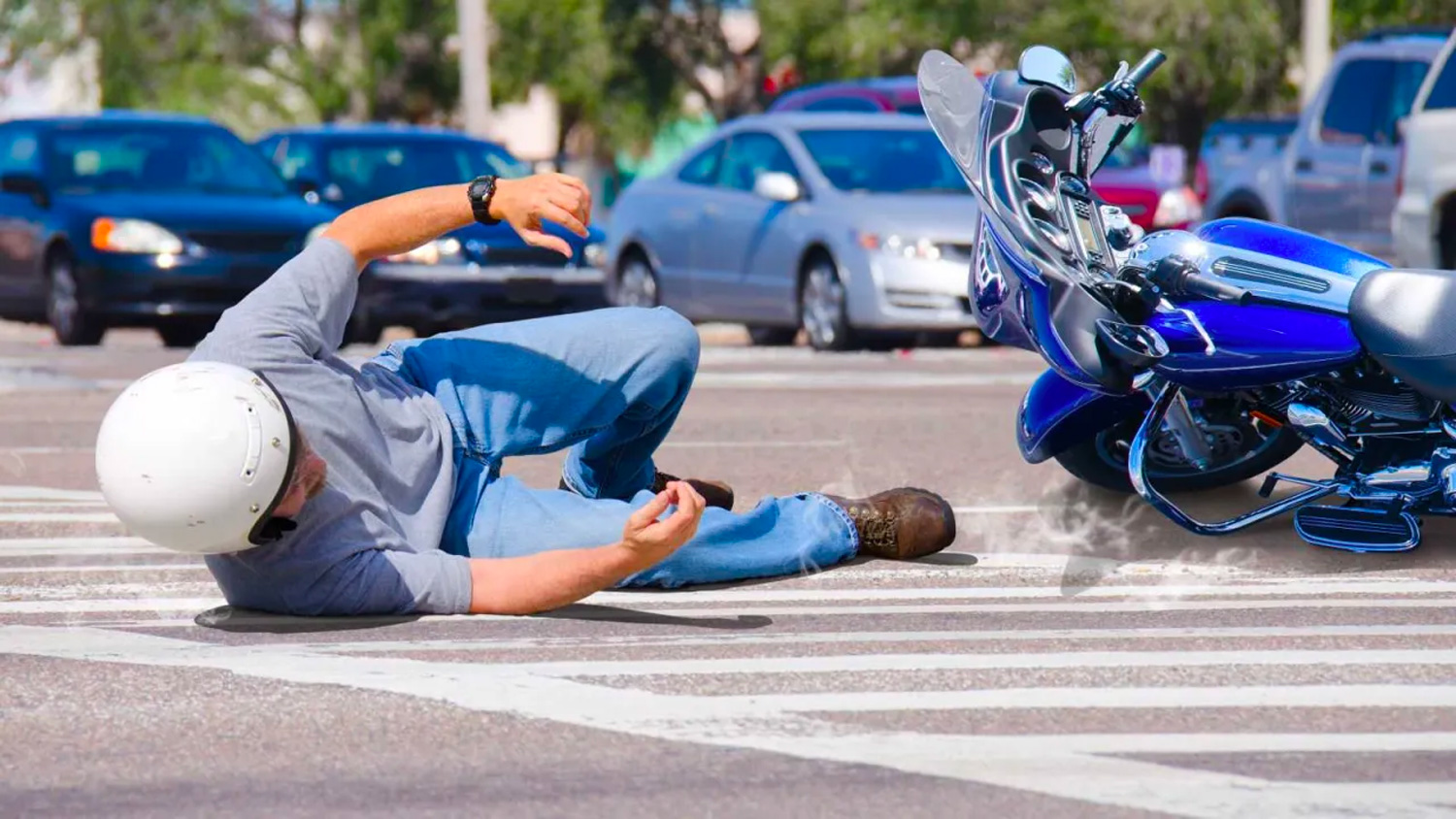
During The Fall
So the big moment has arrived. This is where the rubber hits the road, or more correctly, where you hit the road. Most likely you’ve gone into a corner too fast, a car has suddenly pulled out on you or your attention was momentarily captured by some random hottie walking down the street and when you managed to return your attention to what you were doing (you know – riding that motorcycle you’re on), the car you were travelling behind is now hard on the brakes and you’ve clearly not got enough distance to stop. Sure, there are ways and means to avoid these moments, but it’s probably too late for that now. You’re coming off this bike whether you like it or not.
Your first task is to not bail too early from the bike. There’s always a chance that you just might be able to steer around the obstacle or actually manage to get the bike through the corner. So don’t wither at the first sign of trouble; try your best to get out of it and stay upright. But should the worst happen and you do end up hitting the pavement, you still shouldn’t be trying to throw yourself clear of the bike. Go with it until such time as you and the bike are sliding. Sure, some crashes will not include slides, but in these cases the time between the accident and coming to a complete halt are too short to react to. Car pulls out. You hit car. Ground hits you.
Márquez slides like a pro; hands raise to avoid broken fingers and he’s looking where he’s going, too. Image via Autosport
But sliding is a whole different ball game. If you come off at speed – say by lowsiding through a fast corner – there’s a damn good chance your crash has only just begun. Now you’ll be sliding. Hopefully you’ve had enough time to see the direction that you are falling in and you’re still on the bike. Anticipate the fall. If you lowside through a right-hander, then you’ll fall to the right but you’ll be sliding towards the outside left of the corner. Go with the fall. Tuck your head in and when the bike and you are both sliding, push the bike away from you. The last thing you want is 200 kilos of heavy metal transportation doing cartwheels over the top of you. Nor do you want to end up being the meat in a motorcycle and crash barrier sandwich.
It’s almost impossible not to hold your hands out to protect yourself; it’s an inbuilt reflex that evolution has baked into us. You won’t even have to think about it. Like trying not to flinch when someone surprises you, your hands will come out automatically. The trouble here is that your fingers and hands are delicate little things and unlike your toes, they aren’t all neatly contained in a sturdy leather case that stops them from being hurt. Even low speed offs can result in pretty serious tendon damage thanks to your fingers or wrists being bent the wrong way by the road when you instinctively reach out to protect yourself.
It’s much better to be sliding behind your bike than to risk it squashing you against another vehicle. Image via ESPN
So once you’re sliding, try to keep your hands flat. And whatever you do, do not be tempted to stand upright before you’ve come to a complete halt. You see it in MotoGP races all the time, so don’t dismiss it as something that you’d never do. You’re full of adrenaline and the initial shock of the impact has been replaced with your brain telling you that some bad shit has gone down and that you’d best get the hell out of the situation. But standing up before you’ve finished sliding is a great way to turn forward momentum into a tumble or a faceplant.
Assuming you took my advice about proper gear, it’s much more preferable to be sliding on your butt or your front than to try and stand up only to find yourself tumbling head over heels; tumbling riders risk serious brain and spinal damage. Sliding riders can often see where they are going and might even be able to use their arms and legs to defend against other dangers like roadside obstacles or vehicles. Tumbling riders have no idea what’s happening.
So hopefully you’ve now come to a halt without being hit by your bike or suffering a second impact with another vehicle, telegraph pole or some other roadside hardware. What next?
Sand means the bike was spilling liquids. Image via hartunianlaw
After The Fall
There’s a pretty simple choice to make here. Either you are now off the road or you are still on it. For those lucky enough to be off the road, it’s now time to take stock and check for injuries. But for the moment we’ll need to focus on those riders that are still on the road. In case you hadn’t noticed, I’ll paint a very quick and alarming picture for you. You are now lying on a damn road.
Roads are frequented by big things that can kill you dead like trucks, buses and SUVs. You’ll definitely be safer off the road. Besides, what good is it to survive a bike crash if you’re then taken out by a Kenworth? The only exception to this rule is if you physically cannot move or if you suspect that you have serious injuries. If this is the case, then just relax and wait for help to arrive. There’s no point walking on a compound fracture or trying to manoeuvre your way through oncoming traffic if you have a serious concussion.
Is it safer to stay on the road or get behind the crash barrier? Image via Auto Evolution
Also, if an onlooker seems like they might be trying to remove your helmet, feel free to forcefully prevent them from doing so. Many a motorcyclist has survived a crash only to be paralysed by well-intentioned onlookers trying desperately to get their helmets off and causing spinal injuries to broken but otherwise fine vertebrae. To be completely safe, you can buy or make stickers for your helmet that read, ‘In case of an accident, DO NOT REMOVE HELMET”.
Don’t worry about your bike. It’ll be fine. We all love our bikes and hate to see them damaged, but unless you’re riding a Brough Superior, it’ll be easily repaired or replaced. And if there’s other vehicles involved, chances are they will be fine, too. Just get your (now probably quite sore) arse to safety. You can work out the what, where, why, who and hows in the relative safety of the sidewalk. The number of people I’ve seen after traffic accidents standing on freeways arguing about who’s at fault while other vehicles hurtle right past them at breakneck speeds is unforgivable. Get the hell off the road first.
Like walking? Get one of these. Image via The Better India
Now you’ll need to assess your injuries. Hopefully the only thing that’s wrong with you is a bruised ego. But other things to check for include fingers and hands that have been twisted backwards. Now focus on your arms and legs to make sure they feel OK; yes, they will probably be sore but unless you’ve hit something hard like a car or a pole, chances are they will be OK.
And if you can, check to see if your pupils are dilated or different sizes; you might be concussed. If you are in any doubt, get a medical professional to check you out. It’s very easy to get into that “I’m OK so don’t worry about me” frame of mind. No one wants to unnecessarily inconvenience other people, but it’s not like you’ve just stubbed your toe. You’ve come off your bike and sometimes injuries aren’t immediately apparent.
Rideable or not? Image via Reddit
Finally, it’s always tempting to get the hell out of Dodge as soon as possible. No one likes standing around while a bunch of strangers drive past in their cars eyeing your sorry self off while you stand next to your freshly screwed bike. You’ll probably want to go home and lick your wounds like a normal person. But you’ll need to check the bike to make sure it’s safe to ride first. I myself have ridden crashed bikes on more than one occasion, and both times the bikes were very much on the edge of being unrideable.
One had the forks twist in the triples so that the bars were pointing in a different direction to the front wheel and the other had fallen on the right-hand side so that the bike’s rear brake lever was bent in and pretty much unusable. Clearly, it’s more expensive to get your bike transported back to your home or to a repair shop, but what’s a few hundred dollars to save you from having another crash?
Two stroke down. Image via Ride Vision
In closing, no one wants to crash their bike. It sucks, it’s expensive and it hurts like hell. But chances are it will happen to you sooner or later. The best advice for any rider is to try and avoid a crash all together by being a safe, sensible and smart motorcyclist but if and when it happens to you, knowing how to do it in the safest manner possible can mean the difference between a bruised ego and a broken body. Ride safe.

